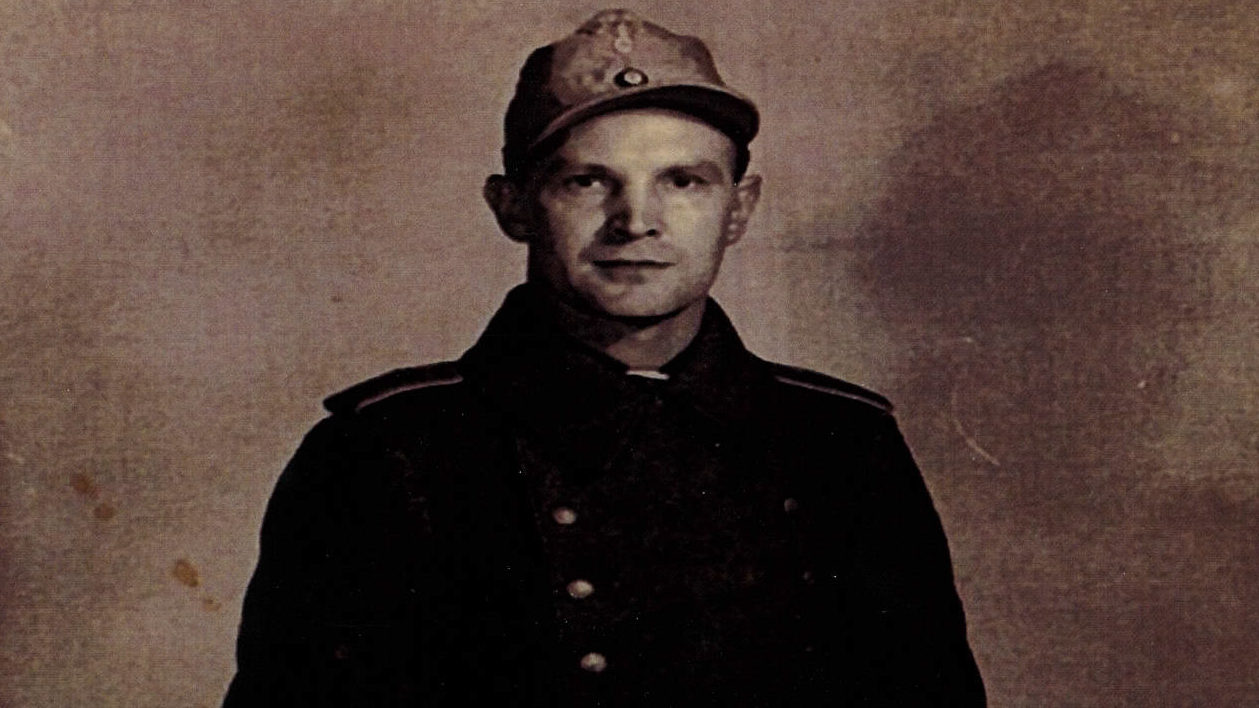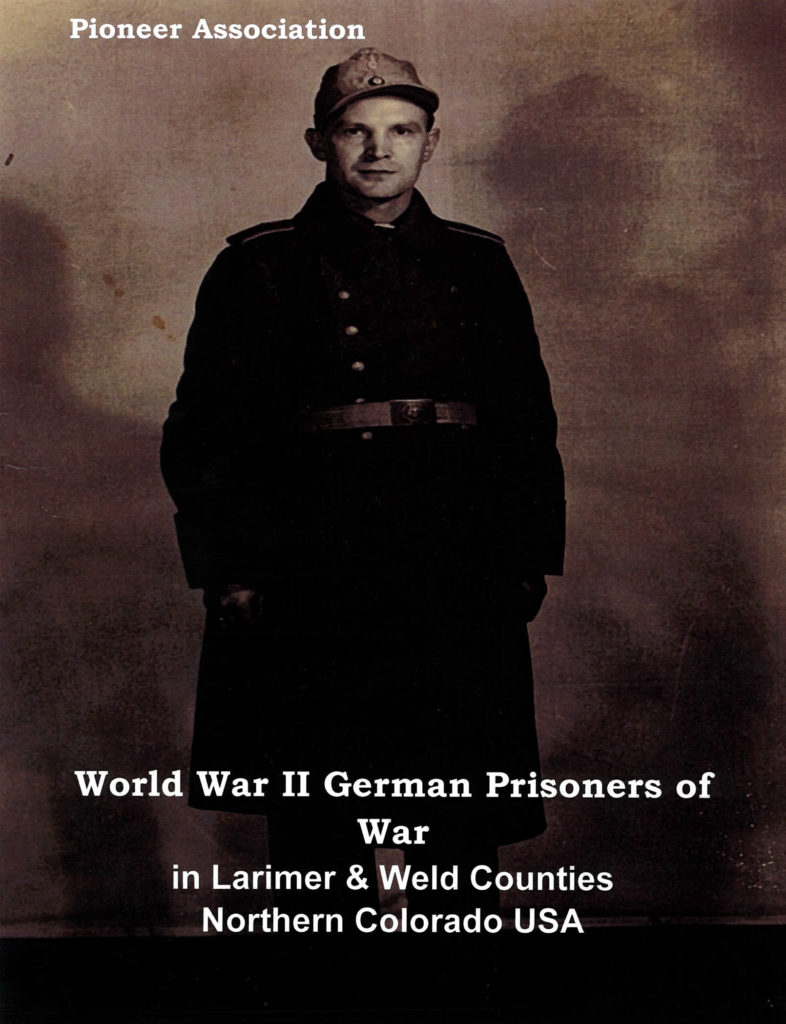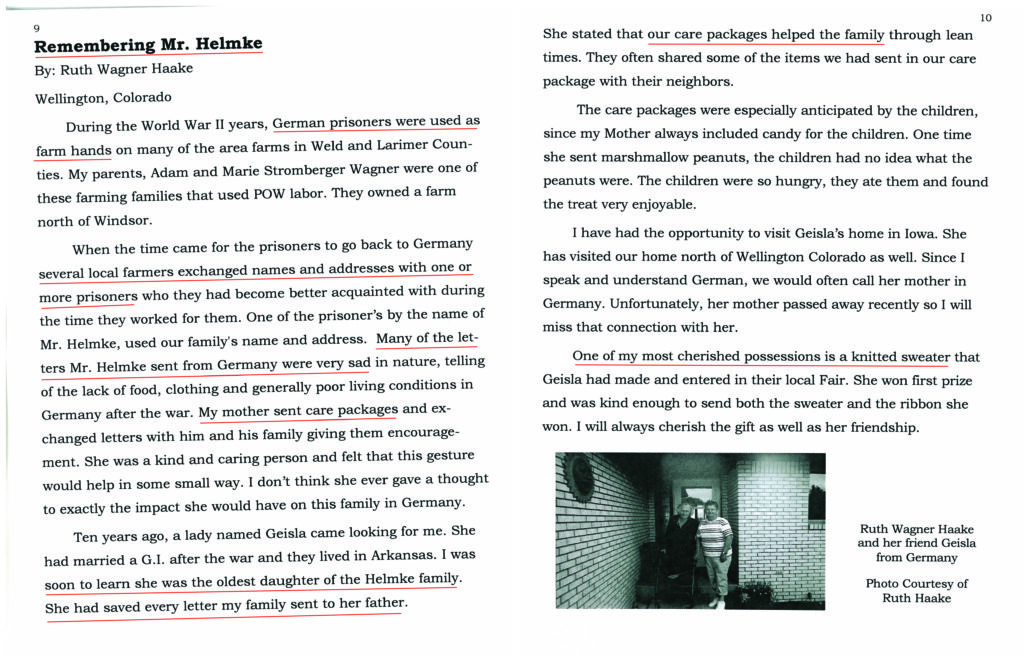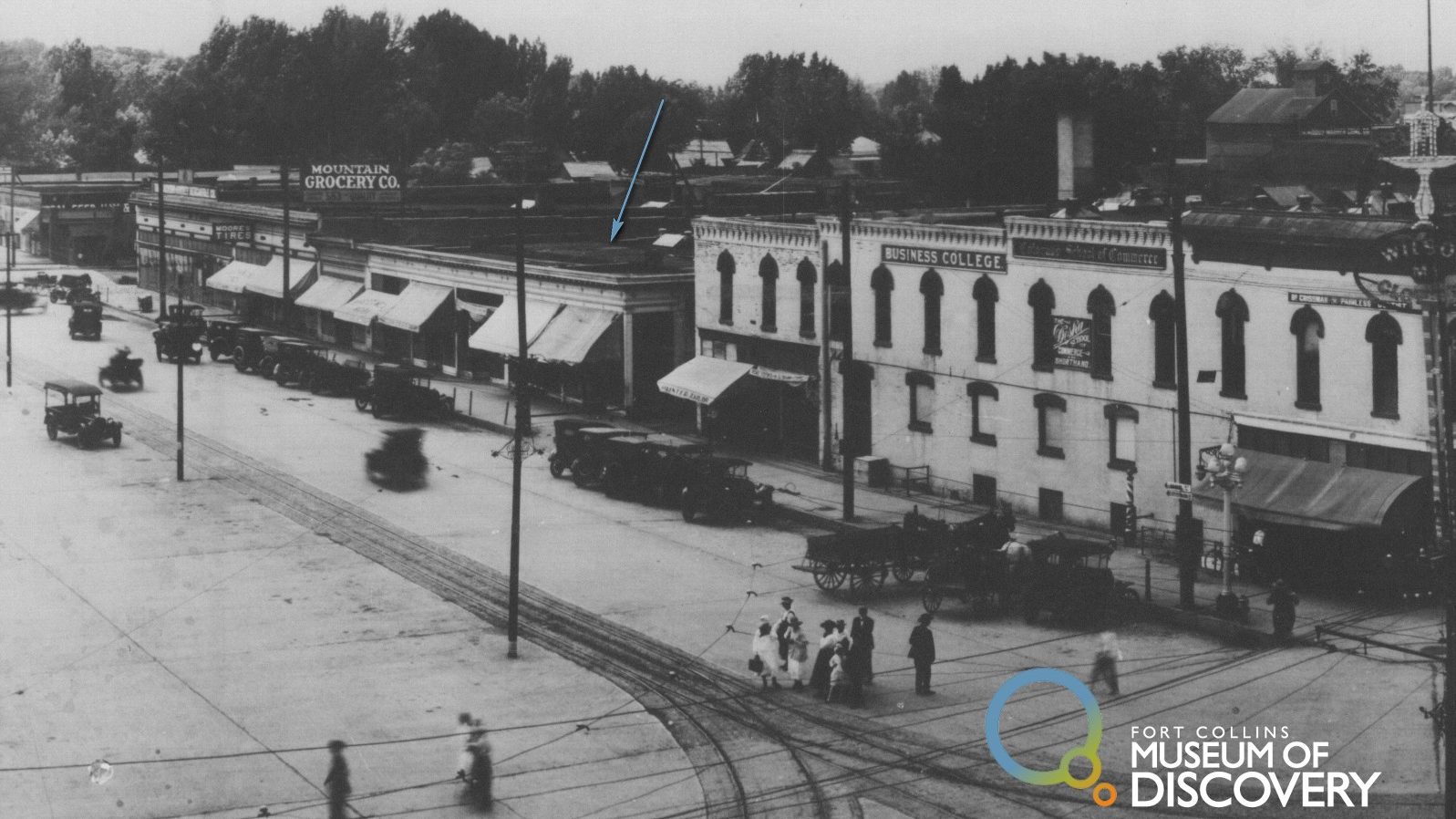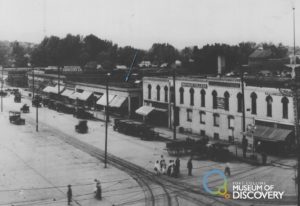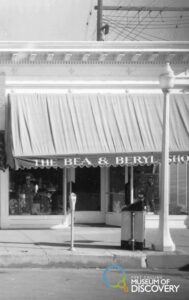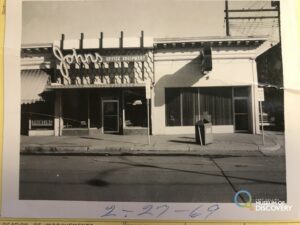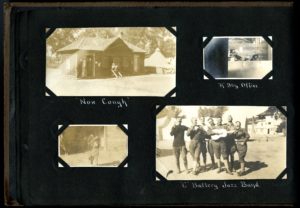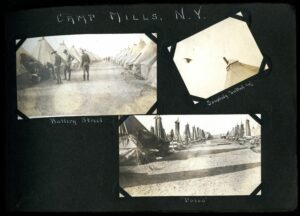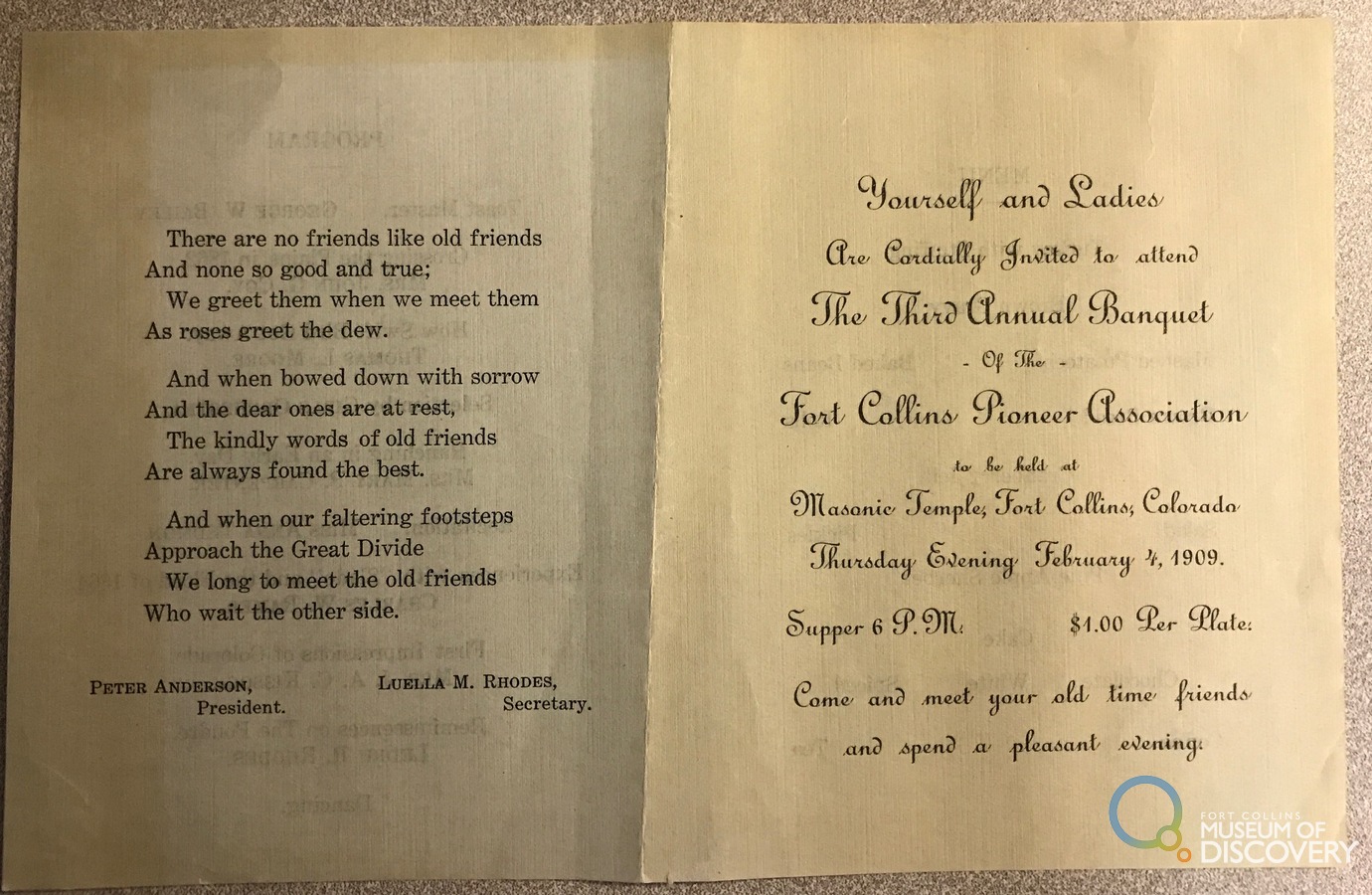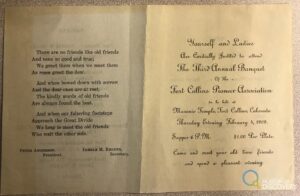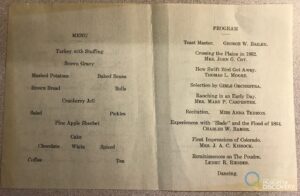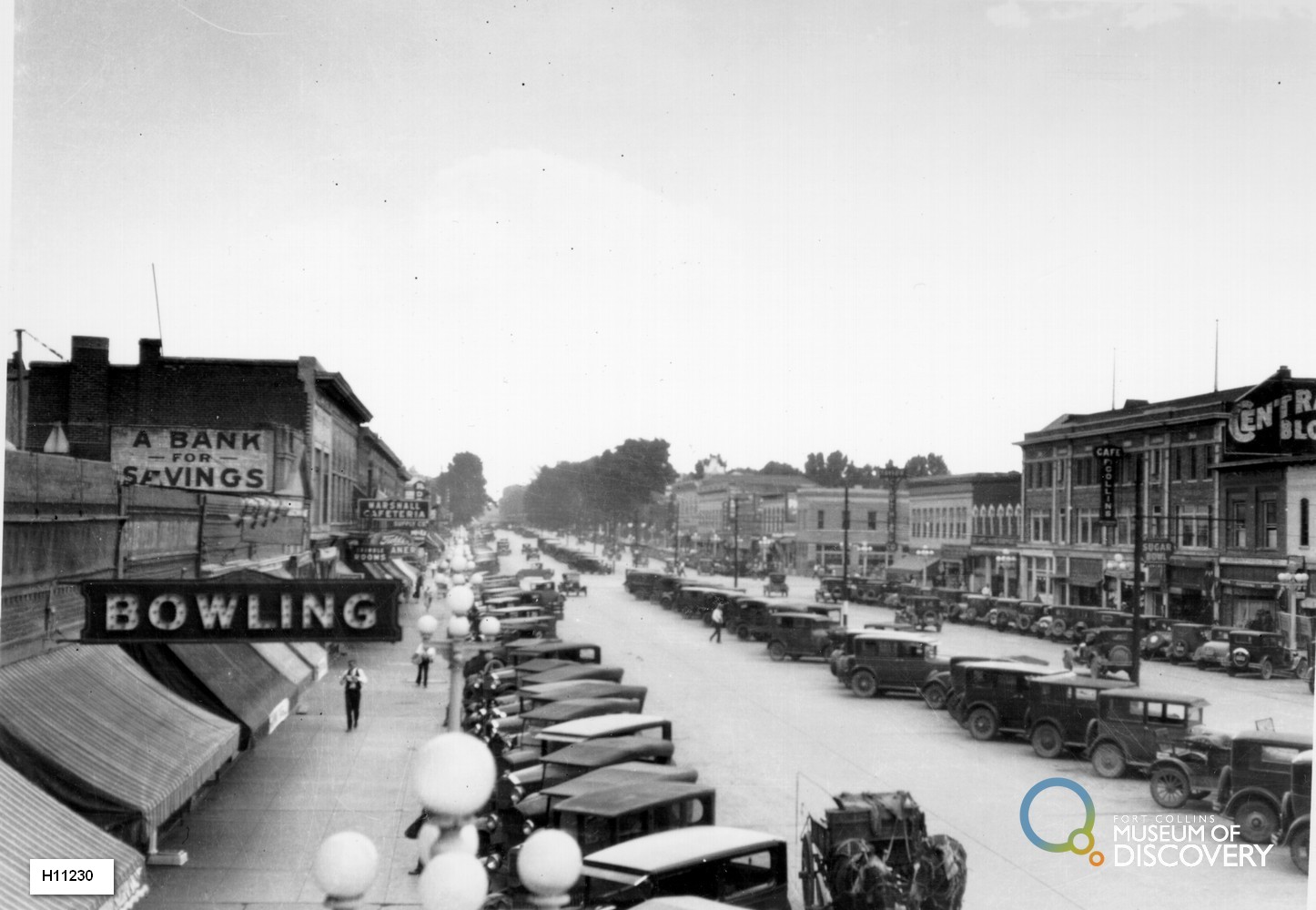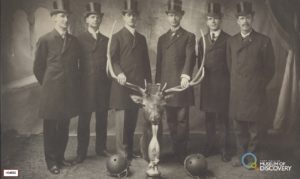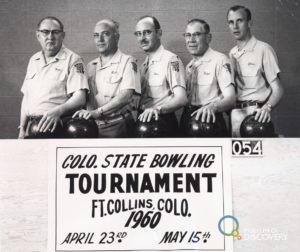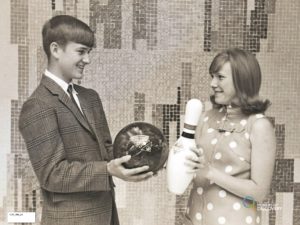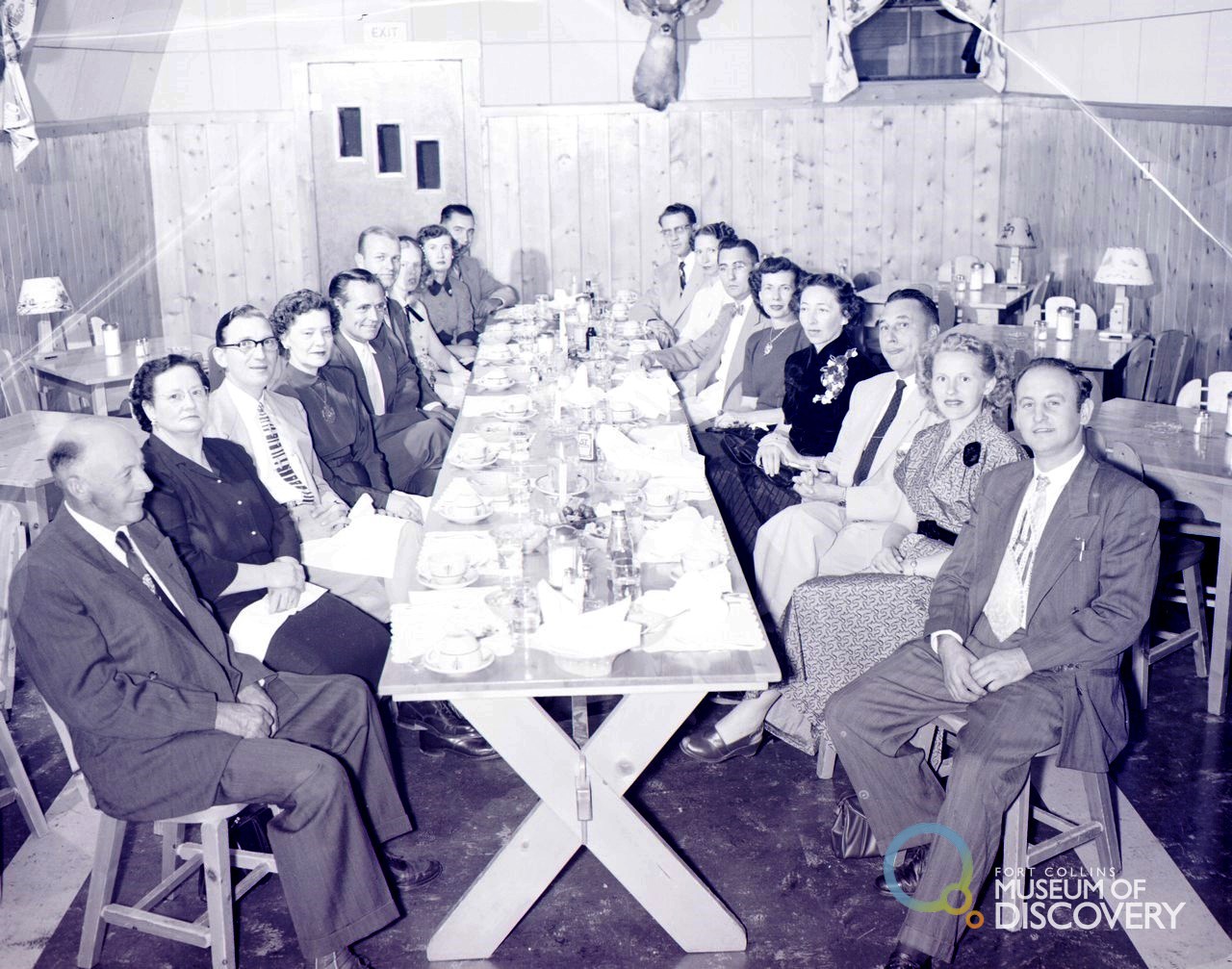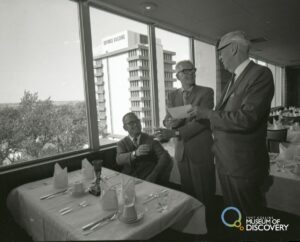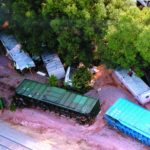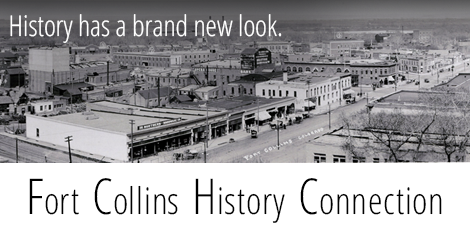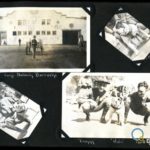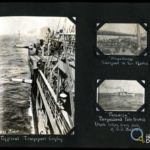Camp Merritt (in New Jersey) was the final stateside station for Colorado’s WWI Battery A soldiers. On January 23, 1918, they boarded the steamship Baltic, bound for Europe. After a stop in Halifax, Nova Scotia, they set forth on January 27, escorted by a British cruiser (and later in the journey, eight destroyers). These precautions were necessary to ward off U-boat attacks.
On February 5, 1918, the artillerymen witnessed the sinking of the troopship Tuscania by UB77 off the Irish coast. The Doughboy Center website (http://www.worldwar1.com/dbc/tuscania.htm) tells us that “The Tuscania was the first ship carrying American troops to be sunk, and public opinion in the USA regarded its loss as an outrage.”
Hurdle’s scrapbook page shows a typical transport convoy; the Prince George; and a shot of the Tuscania taken from the Baltic.

The soldiers disembarked at Liverpool, traveled by train across England, then across the English Channel. Heavy seas were running, and “packed like sardines,” the men uniformly became seasick before finally setting foot in France. In a letter home, John Hurdle discussed the seasickness – and a dubious remedy for it – on the trip across the Atlantic:
“We went on the boat in the afternoon, and before midnight had several cases of seasickness while the boat was still tied tip to the pier. … One of the boys in B Battery had a sure method of preventing seasickness [eating onions]. … But let me give you a tip—if you ever take a sea voyage, don’t eat onions, and don’t let any of your associates eat them, because they don’t help any…”
Two days of discomfort riding in boxcars on French railroads brought the regiment to Camp de Souge, where it spent the next two months in additional training. The highlight came when the regiment received its artillery piece, the 155 mm Grande Puissance Filloux (GPF). John Hurdle’s gun crew called their GPF “Gila Monster,” and Hurdle would later give a very extensive description of its use in the war. Here’s a picture of it, labelled “My gun, ready to move, in position.”

Post by Doug Ernest.
Continue Reading

